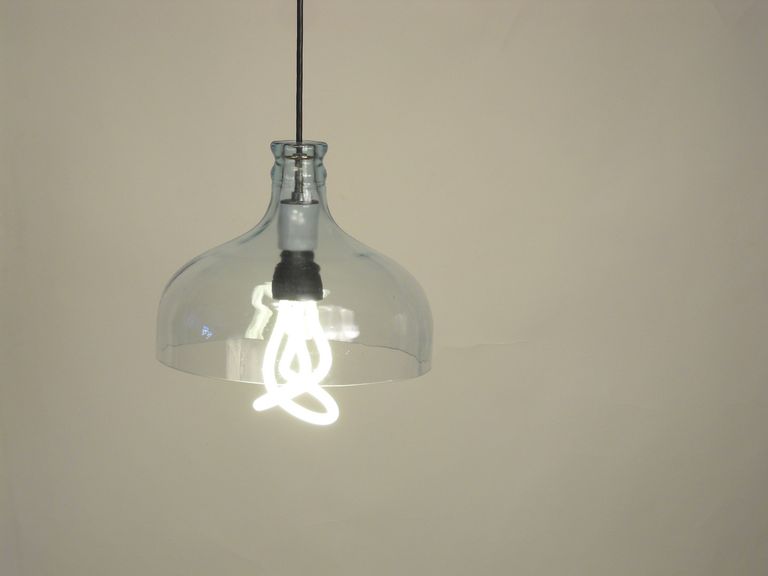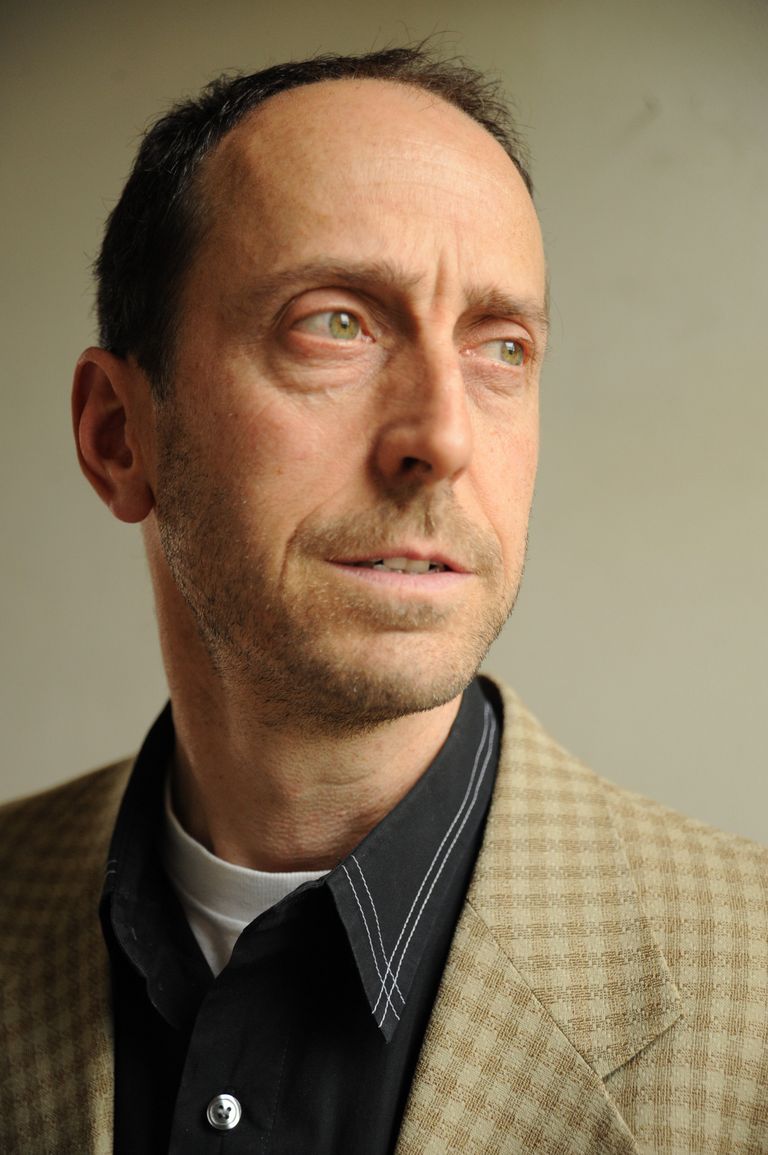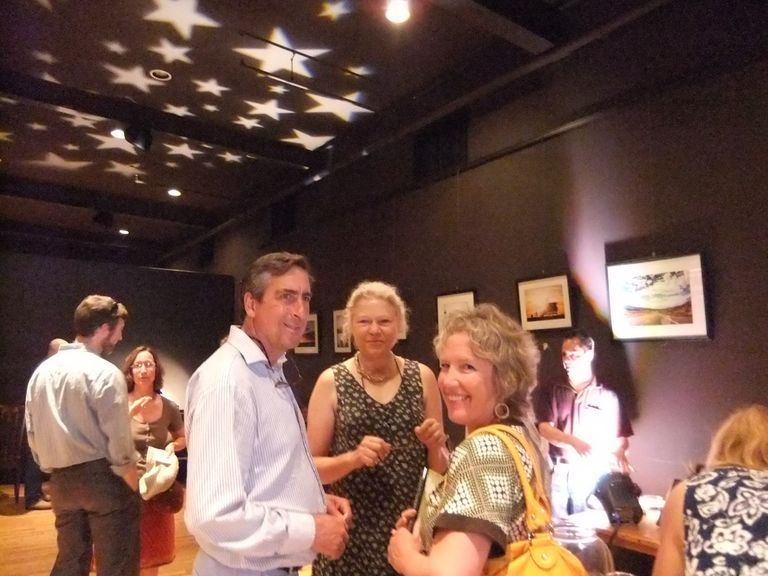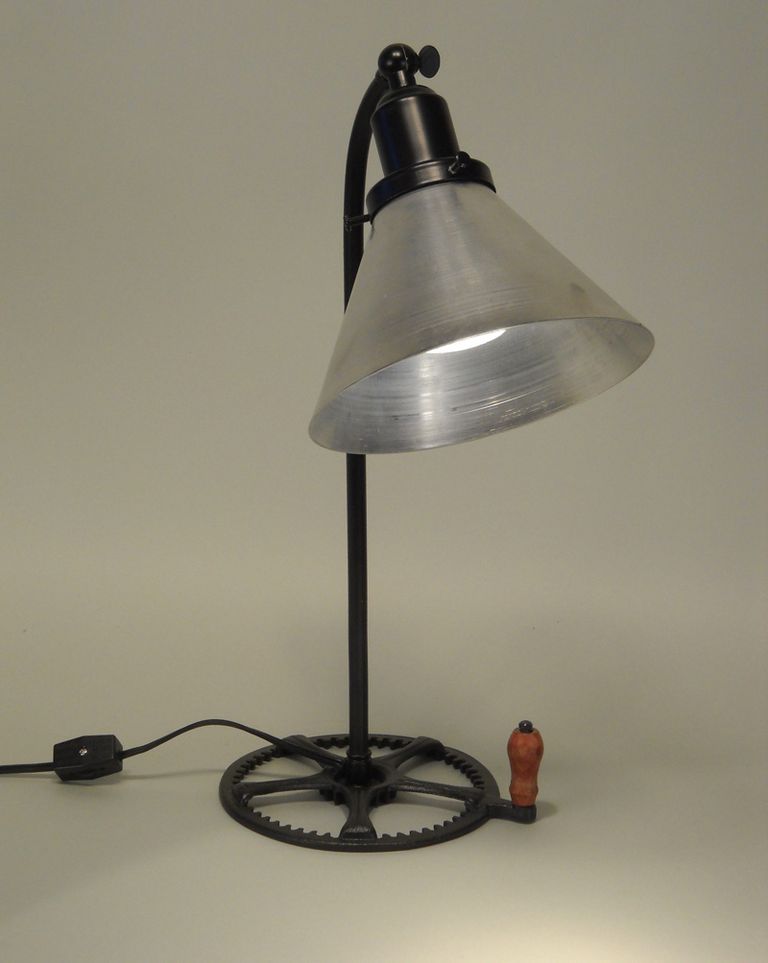9.11 AIAVT Newsletter

How "Lighting Retrofit and Relighting—A Guide to Green Lighting Solutions" Came to Be
Every once in a while, a good opportunity arises and we are in a position to take advantage. Such is the case with the book More...
AIAVT/CSIVT Symposium Explores Role of Thoughtful Design in Building Sustainable Communities
"I believe that what you're conferring about today is the solution to our economic troubles," Gov. Peter Shumlin told a crowd of over 200 architects, engineers, planners, and other building professionals More...
Keynote Speaker Urges Vermont to Become Model of Sustainability
If Vermont's design community is willing to lead the way, Vermont can become a model of sustainability for the rest of the country, according to a leading expert on urbanism and green building. More...

Conrey Returns to AIAVT Board of Directors
Barbara Conrey, a licensed architect in Vermont since 1983, is back on the AIA Vermont Board of Directors—with a new purpose. More...

Eyes Light Up at Sight of Newest LED Offerings
On July 14, Donna Leban, AIA LC, of Light/Space/Design, held an out-of-studio social and book-signing at New Moon Café in Burlington More...

AIAVT Selects Winner of Student Design Competition
On April, Brian Tarbox, a student in Norwich University’s School of Architecture + Art, received the AIAVT $500 “Best in Show” Award More...
So you want to write a book?
How Lighting Retrofit and Relighting—A Guide to Green Lighting Solutions Came to Be
By Donna J. Leban, AIA LC
Every once in a while, a good opportunity arises and we are in a position to take advantage. Such is the case with the book I had the benefit of writing and seeing to publication over the past two years. It happens that Jim Benya, known to many Vermont architects from his lighting presentations at Efficiency Vermont’s “Better Buildings by Design” conferences, was one of the original authors of The Lighting Retrofit Manual, an influential 1990s guide to basic lighting retrofit, published by the Edison Electrical Institute. Jim brought the idea of updating this guide to the architectural editors at the publisher John Wiley & Sons, who asked several editorial consultants, including me, whether we thought there was a need for an updated book.
In terms of developments in lighting, the 1990s are ancient history, so of course I believed there was a need for a new book on lighting retrofit. Today, lighting retrofit (i.e., changing lamps and ballasts or entire fixtures for energy efficiency) is overshadowed by the larger opportunities in relighting. Relighting entails a more substantial redesign than retrofit—to improve the subtler qualities of lighting, reduce or increase illuminance values in foot-candles, upgrade fixtures to reduce glare, and place light where it is most effective while at the same time reducing energy usage.
Having shared conversations at many an event, Jim realized that he and I have very similar attitudes about lighting design and retrofit, and that given his busy schedule and my writing skills and knowledge of the subject matter, I would make a good co-author. My involvement would also provide a bicoastal viewpoint, since Jim lives in Portland, Oregon. Given a softened lighting design market and the need to extend my business scope, I readily signed on.
The entire publishing process took a year and a half—from expanding the outline through five drafts, developing contacts with lighting manufacturers for product images, and to taking photos of example projects. I managed to simultaneously complete just enough lighting design work to not go broke. Since much of my recent work was in relighting, some of these projects are featured in the book. The bicoastal work arrangement turned out to be more difficult than anticipated, and Jim’s busy schedule and other developments resulted in my doing the lion’s share of the work. Jim, always a gentleman, is gracious in crediting me with the major percentage of authorship of the 300-page Lighting Retrofit and Relighting—A Guide to Green Lighting Solutions.
My decades of experiences working with facility owners, managers, architects, engineers, energy auditors and electrical contractors have influenced the book in numerous ways. First and most importantly, the book is very readable and not overly technical, while not writing down to its main audience. Tables are simple and focus on demonstrating several specific options for each lighting technology and the resulting savings. Becoming familiar with the topics covered would enable any design professional, energy auditor or contractor to offer solid, lighting-retrofit advice, while understanding the complexity of decisions unique to existing facilities.
The book is directed primarily to those who are involved in lighting decisions, but may not be certified, card-carrying lighting designers. It is also a useful guide for those who want to become more involved in lighting and better able to knowledgeably discuss the topic. After all, there are only about 2,500 lighting- certified professionals in the United States. The just-released 10th Edition Lighting Handbook from the Illuminating Engineering Society of North America (IESNA), available for $525, is the professional guide to lighting. Those who are not lighting designers are unlikely to wade through this eight-pound encyclopedia of lighting. Our book is available for about one-tenth the cost of the Lighting Handbook.
Available online from Wiley.com and Amazon.com in both hardcover and electronic form, Lighting Retrofit and Relighting—A Guide to Green Lighting Solutions is also an excellent educational guide for LEED-qualified professionals and energy auditors. A purchase made through Wiley offers an additional bonus: the book’s forms and computational tables are available as Excel spreadsheets. Professional and trade organizations also offer the book at discount to qualified individuals.
I hope you’ll take a look, and be illuminated.
Donna J. Leban, AIA LC, is the principal of Light/Space/Design, South Burlington, Vermont.
AIAVT/CSIVT Symposium Explores Role of Thoughtful Design in Building Sustainable Communities
"I believe that what you're conferring about today is the solution to our economic troubles," Gov. Peter Shumlin told a crowd of over 200 architects, engineers, planners, and other building professionals gathered at Shelburne Farms on June 2 for a symposium about the future of Vermont’s built environment.
The symposium, titled “Designed in Vermont: Creating Communities that Flourish in the 21st Century,” was co-presented by AIAVT and the Vermont Chapter of Construction Specifications Institute (CSI-Vermont) and offered a full day of learning units for architects. The symposium marked the first time that AIAVT and CSI-Vermont worked together to present a major event—as a step towards achieving broader integration across all the disciplines that participate in shaping our structures and communities.
Shumlin, a firm believer in the need to address climate change, also said in his opening remarks, “We live in an era where we can’t move fast enough” to achieve sustainability. “If we take climate change as reality and face it—grow our … food locally, focus on energy efficiency and renewable energy, plan downtowns so we can walk to work—then we won't have these problems."
Vermont must focus on “smart growth,” Shumlin went on to stress, by attracting development to urban areas and paying attention to how communities integrate homes, open spaces and transportation. He encouraged attendees to “decide how our buildings can retain our ties to the past while still being relevant for today.”
Michael Tavel, AIA, of Michael Tavel Architects in Denver, a leading expert on urbanism and green building, gave the keynote presentation titled “Sustainable Communities: Paradigms and Paradox.” He addressed one key paradox, which he had a notion some Vermonters might not be receptive to, early in his presentation.
"Density is probably the most important thing in reducing resource consumption and achieving sustainability," he said. He explained that when people live in urban areas, a per capita reduction in carbon dioxide emissions and water use is realized. He said that sustainability, as it relates to rural living, is not a given; “It can only be truly achieved if individuals are not driving or using many resources.”
Tavel also talked about the need for our country, in general, to “stop building new communities” and revitalize areas where there is infrastructure and water. “Maybe it will be hip again” to live in places such as Buffalo and Detroit, he said.
With respect to achieving density in small towns, Tavel urged Vermont architects to pick up a copy of Pocket Neighborhoods, a book by architect Ross Chapin. “It’s an important book for Vermont towns,” he said.
In concluding, Tavel urged attendees to be mindful of several aspects of design to promote sustainability and safeguard resources. (Read a detailed article on Tavel’s talk, including his concluding remarks, in the next article in this issue).
Other presenters at the event, and their topics, included:
- Joss Besse, Director, Community Planning and Revitalization, State of Vermont and Jim Tischler, Director, Planning and Community Development, St. Albans City, “Smart Growth: Policy to Implementation”
- Jesse Beck, AIA, President, Freeman French Freeman, Inc., Burlington and Jesse Robbins, LEED AP, Freeman French Freeman, Inc., / President, Vermont Green Building Network, “Vermont Urban Means Higher Density”
- Gordon Clements, President, Gordon's Window Décor, Williston, “Window Treatment Options: Latest Research About Improving Old and New Window Performance”
- Paul Costello, Executive Director, Vermont Council on Rural Development, Montpelier, “Imagining Vermont, Values and Vision for the Future”
- Andrew Keefe, President, Green Mountain Window Company, Rutland “Vermont Made Windows: Saving our Future While Preserving our Past”
- Rolf Kielman, AIA, Truex Cullins Architecture and Interior Design, Burlington, “Making Good Towns in Norway, Switzerland and Vermont”
- Bill Maclay, AIA, Founding Principal, Maclay Architects, Waitsfield, “The Path to a Net-Zero Mad River Valley”
- Panel Discussion—Moderator: Diane Gayer, AIA, Director, Vermont Design Institute, Burlington; Panelists: Paul Costello, Executive Director, Vermont Council on Rural Development, Montpelier; Paul Dreher, Architect, Zoning Administrator, City of Newport; Andrea Wasserman, Artist, Vershire, “Transforming Place: Who Holds the Vision of Transformation—Are We the Medium or the Message?”
The symposium was made possible, in part, due to generous sponsorship from Best Tile, Williston; Loewen Window Center of Vermont & New Hampshire, White River Junction; National Fiber, Belchertown, Mass.; Pella Windows & Doors, Greenfield, Mass.; Vermont Insulated Concrete Forms, Waterbury; Benjamin Moore Paints, Williston; Efficiency Vermont, Burlington; Engineering Ventures, Burlington; Housewright Construction, Newbury; A.W. Hastings (Marvin Windows & Doors), Enfield, Conn.; and over 20 exhibitors.
To read an in-depth article about Gov. Peter Shumlin’s talk, click here.
Keynote Speaker Urges Vermont to Become Model of Sustainability
By Dick Nelson
If Vermont's design community is willing to lead the way, Vermont can become a model of sustainability for the rest of the country, according to a leading expert on urbanism and green building.
"A lot of America was built very fast, without much thought about how it should be built," said Michael Tavel, AIA, founder of Michael Tavel Architects in Denver. "In the past 50 years, our built environment has been built in an era of cheap energy. Our civilization has gone through a period of amnesia. My work, your work, is to connect back to a past era of human experience (before cheap energy)."
Tavel was the keynote speaker earlier this summer at a symposium co-hosted by AIA Vermont and CSI Vermont on creating sustainable communities and held at Shelburne Farms. At the time, central Vermont was recovering from heavy flood damage and Lake Champlain was still above flood levels. This took place before the much greater damage wrought by Hurricane Irene on August 28.
In introducing Tavel, AIA Vermont President Harry Hunt posed these questions: "Why are we here today? Is it the credits?"
"I'd like to think we're here for a bigger and more important reason. Energy efficiency alone is not going to be enough to get us to where we want to go. It's not just buildings, but how buildings come together to form communities. I submit to you that thoughtful design will allow us to achieve the sustainability we all realize is necessary.”
"We're here today to learn how to design thoughtfully in Vermont."
Hunt said Tavel "epitomizes the idea of thoughtful design. He's a specialist on sustainable, mixed-use urban planning."
Leading off his presentation, Tavel stated, "Density is probably the most important thing in reducing resource consumption and achieving sustainability," citing the book Green Metropolis by David Owen, subtitled Why Living Smaller, Living Closer, and Driving Less Are the Keys to Sustainability.
"The biggest key," said Tavel, "is to avoid using your car. “The other key is to have your buildings be attached.”
Tavel cited a number of steps Vermont designers should embrace (if not already doing so) to promote sustainability and preserve resources:
- Use passive design. "Plan overhangs to block the summer sun, but take advantage of the winter sun."
- Design environments with usable, quality outdoor spaces. “That is, spaces that are comfortable during winter or summer, and that have a good connection to interior spaces. This makes it easier for inhabitants to become accustomed to spending time outdoors—and can result in those inhabitants being able to tolerate a wider range of temperatures inside their buildings.”
- Embrace density. "The traditional urban neighborhood has been destroyed by the age of cheap oil. We need to in-fill our communities and get more bodies on Main Street. We need to be directing our growth to where there's urban infrastructure and sufficient resources." Tavel noted that while Vermont's population has been stable recently, the state might see an influx in the future as people flee current (soon-to-be water-starved) population growth areas, like the Southwest.
- Encourage walking, biking and public transport. "In the Swiss Alps you can get everywhere by public transit. In Colorado, they've gotten it to work in resort communities like Breckenridge, Vail and Aspen."
- Incorporate renewable energy. "In Germany, they stretch building out east to west for solar gain, and they have solar panels on every roof. Buildings produce four times more energy than they use."
- Build smaller. "In Japan the average size home is 800 sq. ft. We can save a lot of resources by having our houses be more modest, treating outdoor spaces as outdoor rooms, and running storm water into neighborhood rain gardens."
Tavel said that by embracing these ideas, Vermont can assume a leading role in improving our lives and become a model for the rest of the country.
Dick Nelson is an affiliate member of AIAVT and the publisher of Vermont Builder/Architect.
Conrey Returns to AIAVT Board of Directors
Barbara Conrey, a licensed architect in Vermont since 1983, is back on the AIA Vermont Board of Directors—with a new purpose. Conrey, a professor in Architectural Engineering Technology at Vermont Technical College (VTC) since 1996, will now serve as a liaison between the academic and practicing architect communities. Previously, Conrey served as both president of AIAVT and AIA New England (AIANE). She is also a former member and chair of the Vermont Board of Architects and a past executive director of AIANE.
A 1995 recipient of an AIAVT Excellence in Design Merit Award for the Stowe Library, Conrey’s built architectural work in Vermont has spanned from residential through hospital design; several of her projects have served as course examples at VTC. She has also has served on numerous juries of both professional and student projects through AIA and VTC design competitions.
At VTC, Conrey is a founding faculty member of the Sustainable Design and Technology Program. She teaches foundation courses in architectural history and detailing, as well as an upper-level systems-integration course. Her many achievements at the College include creation of the “European Classroom” course that combines travel abroad with art and architectural history studies; the development of a bachelor of science degree in the Green Buildings Track; and two upper-level studio courses that bring together multidisciplinary student teams to design site, building, and energy systems on projects.
Conrey is a recipient of the 2004 VTC Student Advising Award and has received numerous VTC faculty development and Learning Communities grants. In 2004, Conrey received a Vermont Teachers’ grant to participate in an Earthwatch Institute archaeological dig of a Roman fort near Hadrian’s Wall, where she discovered a coin that dated to the time of the Emperor Trajan, approximately 114 CE.
Eyes Light Up at Sight of Newest LED Offerings
On July 14, Donna Leban, AIA LC, of Light/Space/Design, held an out-of-studio social and book-signing at New Moon Café in Burlington to celebrate the publication of her book, Lighting Retrofit and Relighting—A Guide to Green Lighting Solutions (See the article about the book itself, co-authored by Jim Benya, in this issue of newsletter). Over sixty architects, lighting designers, and others in related fields gathered to chat, enjoy refreshments, receive door prizes, and observe the latest lighting innovations.
Among the new products shown was an elegant, compact-fluorescent light bulb, referred to by the manufacturer, Plumen, as “The World’s First Designer Energy-Saving Light Bulb.” The bulb, which has been nominated for Product Design of the Year by the Design Museum, London, was presented and later given away as a door prize by Conant Metal & Light of Burlington. Conant also presented a repurposed table-lamp made from an antique apple peeler. Another highlight of the evening was the presentation of two stunning, linen paper "flame" fixtures fabricated by Studio-Glow of Grand Isle.
Other products that impressed the crowd included an LED color-changing theatrical fixture; Philips’ small, powerful recessed LEDs, and the newest, warm-white-light LED lamps on the market.
For more information about these products, contact Conant Metal & Light at info@ conantmetalandlight.com, Studio Glow at light@ studio-glow.com, or Donna Leban at lightspd@ comcast.net.
AIAVT Selects Winner of Student Design Competition
In April, Brian Tarbox, a student in Norwich University’s School of Architecture + Art, received the AIAVT $500 “Best in Show” Award at the School’s annual design competition. His project, “Light Strength,” was selected from a field of 17 entries by a jury composed of several members of the AIAVT Board of Directors.
“I was more than surprised when I received the award…to the point that I didn’t have my parents at the ceremony,” said Tarbox. “I don’t really expect awards for what I do; I just do what I enjoy. All the projects in the show were great—all deserving of recognition.”
Tarbox, a native of Barre, Vt., began working part-time for Joe Greene, AIA, at Joseph Architects, Waterbury, Vt. in 2003 while attending Vermont Technical College (VTC). After graduating from VTC in 2006 with a bachelor’s degree in architectural engineering, he went full-time at Greene’s firm and found his interest in architecture growing stronger. He enrolled at Norwich in 2007, while continuing to work for Greene.
“Arriving at Norwich was an eye-opening experience,” Tarbox said. “It was an exploration of the ‘why’ versus the ‘how’ I had grown accustomed to in engineering school.”
In his award-winning project, Tarbox brought his knowledge of both fields of study to bear. He set out to explore the use of a state-of-the-art material—carbon fiber—to build a structure within an active quarry consisting of one of architecture’s time-tested building materials: granite.
“The new material, carbon composites, became a form for integration and not just a way of constructing form,” Tarbox said. “The continuously varying new structure, derived from the stresses and forces of the existing quarry, developed a shape that was in tune with the carbon. The composite “multitasked” to become the skin and the structure. Its incorporation into the quarry allowed for a level of contradiction and melding between a heavy material and a lightweight modern material to work together in one structure.”
“Brian’s project was a compelling blend of terror and delight,” noted Norwich’s Graduate Architecture Program Director Michael Hoffman, AIA. “The architectural sleight of hand to accomplish that extraordinary cantilever was elegantly simple. The resulting project reveals a clear understanding of materials and a sophisticated grasp of physics; it was all woven into a highly resolved formal proposition. It is a great thesis project and I believe Brian has a bright future as an architect ahead of him.”
Tarbox said he looks forward to completing his internship at Joseph Architects and eventually becoming licensed. Though one of his engineering professors once joked that Tarbox had “joined the dark side” in deciding to pursue architecture, Tarbox said, “I like to think of it as a different kind of light.”
AIAVT will grant five awards in total to students of architecture this year. The remaining award recipients will be announced in AIAVT’s December newsletter issue. The awards are made possible through the Hanne N. Williams Scholar Fund, which derives support from the AIAVT Annual Golf Tournament, the AIA National Component Matching Grant Program, and other sources.
Calendar
10/20 VT/NH Meeting— Dartmouth College
12/8 Annual Excellence in Design Awards—at Country Club of Vermont , Waterbury
Excellence in Design Awards Show Moves to Brattleboro
Despite Hurricane Irene’s recent devastation in Brattleboro, the Hooker Dunham Theatre and Gallery remained unscathed—thankfully—and a design team was able to hang the AIAVT Design Excellence Awards Show there as scheduled. The show remains up through September. For more information, visit http://www.hookerdunham.org/.
Thanks to Adam Lemire, Linesync Architects, Wilmington for leading the effort to set up the show.
Next stop (and last) stop: October, Tip Top Media & Arts Center, White River Junction. This year’s show is made possible, in part, by Gold Sponsor A.W. Hastings, distributor of Marvin Windows throughout the northeast and Silver Sponsor, Carroll Concrete, distributor of Nurdura Concrete for Vermont and New Hampshire.
Thanks to Our Symposium Supporters
Sponsors:
Best Tile
Loewen Window Center
National Fiber
Pella Windows & Doors
Vermont Insulated Concrete Forms
Benjamin Moore Paints
Efficiency Vermont
Engineering Ventures
Housewright Construction
Marvin Windows & Doors
Exhibitors:
ABS DoorAmerica
All Seasons Urethane Foam
ATAS International
Carroll Concrete
Gordon's Window Décor
Green Mountain Window
GreenSource
Patcraft Carpet
Rulon Company
Sherwin Williams
Sto Corp
Terraclime Geothermal
Vermont Eco Floors
Vermont Verde Antique LLC
Warmboard Inc.
New Affiliate Members
Aspen Construction Services builds legacy, energy efficient and green homes as well as small commercial projects throughout New England and the state of New York. Aspen is a construction management company with a client-focused approach that results in cost-effective projects that exceed expectations. Contact: Linda LaCroix, linda@ aspenvermont.com, www.apsenvermont.com, 802-379-7256
Black Dog Holdings—Mary Lintermann, P.E., is no longer with DEW Construction and is currently focused on personal design/development/consulting projects through Black Dog Holdings, one of the companies that she owns. Mary is eventually seeking a new venture. Contact: Mary Lintermann, mlintermann@ gmail.com, 802-881-5473
Charron Incorporated is a multi-faceted lighting agency that has been serving Northern New England since 1960. The company offers design services and many lines of lighting in the architectural specialties, Tre Ci Luce is renowned for its essential and clever design, and great attention to detail and global quality, with special emphasis dedicated to the application of newly evolving technologies toward the requirements of lighting professionals. asymmetric lighting, commercial downlighting, and commercial fluorescent categories. Contact: Bill Curley, bcurley@ charroninc.com, www.charroninc.com, 802-734-0254
Goodro Lumber—Contact: Tim Comes, timc@ goodrolumber.net, 802-388-4915
Focusing on energy efficiency for over 25 years, and working closely with architects and designers, Gordon's Window Decor manufactures sells and installs custom window treatments in the greater New England market. For a free consultation contact: Bob Maurer, bobm@ gordonswd.com, www.gordonswindowdecor.com, 802-338-9388
Hole in One Display creates physical terrain models for architectural design and presentation out of solid pieces of foam using CNC technology. Contact: Peter Katz, pedrokatz@ yahoo.com, www.holeinonedisplay.com, 802-730-4272
National Fiber, Belchertown, Mass. makes Cel-Pak cellulose insulation. The product substantially reduces heating and cooling costs, preserves the environment and enhances the value of designs. Contact: William Sovie, bills@ nationalfiber.com, www.nationalfiber.com , 414-531-2248
VT Insulated Concrete Forms has been specializing in ICF construction for 15-plus years. VTICF’s mission is to help the architectural and construction communities meet the heightened expectations of customers, be they commercial, residential, or institutional. VTICF distributes the Amvic family of products, among the industry’s leading products, in Vt. and N.H. Contact: Joel Baker, vticf@ aol.com, www.vticf.com, www.amvicsystem.com, 1-866-VTFORMS (883-6767)

The aiaVT newsletter is published by AIA Vermont, the Vermont Chapter of the American Institute of Architects.
Executive Director: Carol Miklos
CMiklos@ aiavt.org
88 Blackbird Lane
Charlotte, Vermont 05445
p 802.425.6162
f 802.425.6165
aiaVT is edited by Carol Miklos.
Published views are the author’s and not necessarily the views of AIA Vermont or any other organization.
AIA Vermont reserves the right to edit articles for available space and determine appropriate content prior to inclusion. Submissions must be received by the 15th of the month prior to publication.
Please send articles, notices, letters, and graphic submissions to:
Carol Miklos, Executive Director, AIA Vermont
CMiklos@ aiavt.org
88 Blackbird Lane
Charlotte, Vermont 05445
p 802.425.6162
f 802.425.6165












